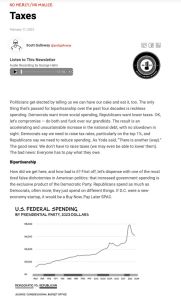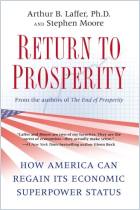Acesse a sua conta getAbstract para obter o resumo!

Acesse a sua conta getAbstract para obter o resumo!
Scott Galloway
Taxes
No Mercy / No Malice, 2023
Sobre o que é?
To lower America’s debt, corporations and the rich must pay their fair share of taxes.
Recommendation
Tax policy in America has long had its problems, and politicians have made the Internal Revenue Service a villain. Yet meager resources at the US Treasury have led to unprecedentedly low audit rates and lax enforcement, allowing both tax evaders and avoiders to profit at the expense of middle-class and low-income American households. In this bold essay, professor Scott Galloway argues that making the rich pay their fair share starts with an improved tax code and robust enforcement, and he suggests changes that could ease the burden on low-wage earners.
Summary
About the Author
Scott Galloway, professor of marketing at New York University’s Stern School of Business, writes for and hosts the No Mercy/No Malice blog and podcast.





























Comment on this summary